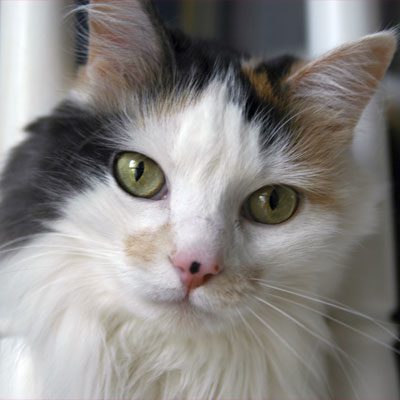If you own a cat, it’s likely that you’ve seen at least a few hairballs over the years. How much do you know about this fascinating aspect of your cat’s health and behavior? Your North Suffolk, VA veterinarian is here to answer your most frequently asked questions regarding our cats’ hairballs.
What Causes Hairballs, Anyway?
Your cat, as you know, is an excellent self-groomer. All of that licking comes with a side effect, though––your cat ingests a lot of loose hair. Most of the hair moves through Fluffy’s digestive tract and gets expelled naturally in the feces, but some of it remains in the gut. That hair eventually clumps together to form a hairball, which gets regurgitated.
Do Hairballs Hurt My Cat?
If you’ve ever watched your cat hack up a hairball, you know that a few moments of gagging and retching will occur before the actual hairball appears. You’ll also note that it’s accompanied by a bit of stomach fluid, and that the hairball itself is more tube-shaped than round, having recently passed through the narrow esophageal tract. The question is, is all of this activity harmful for your feline friend?
No, the occasional hairball won’t cause your cat any harm. If your cat coughs up a hairball now and then, there’s nothing to be worried about.
If your cat is gagging and retching without actually producing a hairball, it’s time to see the vet––your cat could be choking. Also, skin issues and other medical problems could cause your cat to ingest more hair than they’re supposed to. If Fluffy’s hairball production is frequent or has increased dramatically in a short period of time, have your cat examined. Additionally, vomiting is not the same thing as coughing up a hairball. For cats who are vomiting frequently, a veterinary appointment is in order quickly.
Can I Help My Cat Experience Fewer Hairballs?
Although the occasional hairball will always be a part of life, you can take a few steps to have your cat cough up less of them. First, brush your cat on a regular basis; this traps loose fur in the brush itself, meaning that your cat swallows less. Secondly, make sure your cat is fed a high-quality, nutritionally balanced diet. This keeps hair follicles healthy so that less hair is shed initially.
Want to know more about your cat’s hairball production? Call your North Suffolk, VA animal hospital.









